In manga, tsuyabeta ツヤベタ, literally "glossy beta," refers black hair with highlights, or the technique used to render highlights on hair as well as other shiny, black things.
Meaning
The word tsuya-beta ツヤベタ is a compound noun composed of two words, their meanings being:
- tsuya
艶
Gloss. Luster. Shine. - beta
ベタ
In manga: filling an area with black ink.
Generally, it refers to hair drawn filled with black ink and featuring glossy highlights.
Some vocabulary:
- tsuya-tsuya
ツヤツヤ
Glossy. Slick. (reduplication.) - sara-sara
サラサラ
Silky [hair]. Free-flowing. (mimetic word.) - nameraka
なめらか
Smooth. Velvety. - hairaito
ハイライト
Highlight.
Examples
For reference, some examples of tsuyabeta ツヤベタ.
- Context: Shidou Hikaru 獅堂光 admires the view from the Tokyo Tower's binoculars.
- takai na! sugoi na!
高いな!すごいな!
[It's so] high, [isn't it?]! Amazing, [isn't it?]!- na な particle: as a sentence ending particle, can be used to give one's opinion and seek agreement.
Manga: Berserk, ベルセルク (Chapter 1, 黒い剣士)
- Guts' hair, shoulder pads, and pants are rendered using tsuyabeta.
- Context: fully black irises are sometimes called beta-me ベタ目.
Here's a video showing how it's drawn:
Simpler Hair Highlights
Typically, tsuyabeta refers to the pretty, silky hair commonly found in shoujo manga, however, there are other, less silky, less pretty, simpler ways to render black hair with highlights in manga.
For reference:
- Context: Ayumu is a transfer student. She came from Osaka. Tomo nicknamed her Osaka, literally, because she came from Osaka. Ayumu asks Tomo if she ever had a pet, and what was the pet called. Tomo answered she had a hamster, whom she named Hamu-chan.
- yappashi
やっぱし
[Just as I thought].- Her naming sense is too simplistic!
- nani?
なに?
What? - hito'n-chi no petto no namae ni monku an'no?
人んちのペットの名前に文句あんの?
Do [you] have a complain [about] the name of [other] people's pets?- an'no あんの - contraction of aru no あるの.
- anta nani-sama?
あんた何様?
[Who do you think you are]?
Normally, anime doesn't have the more detailed tsuyabeta found in some manga, the one with a texture that looks like you can see individual hair strands standing out. Instead, anime highlights tend to look be extremely simple, like just a curve:
Manga: Morita-san wa Mukuchi 森田さんは無口 (Chapter 1)
- Context: fire eyes for a fired up guy.
Here's a more complete collection of types:
Tricolor
The term tsuyabeta typically refers to hair drawn using only black and white, or rather, using only black ink.
However, more modern manga, created using digital art software, easily have every shade of gray available at their disposal, so sometimes you may see tsuyabeta being used along with a third, gray color. For example:
- niko'
ニコッ
*smile*
References
- 髪のツヤベタ② - minasato.web.fc2.com, accessed 2020-04-05.
- 仕事でも自分の漫画でも!覚えておくと超便利! 髪のツヤベタ 描き方 - cricet.xyz, accessed 2020-04-05.

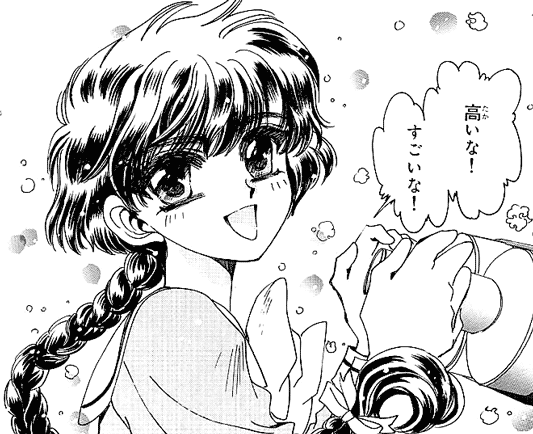
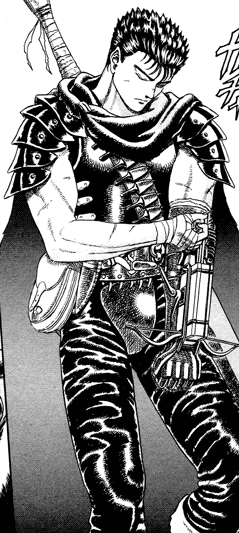
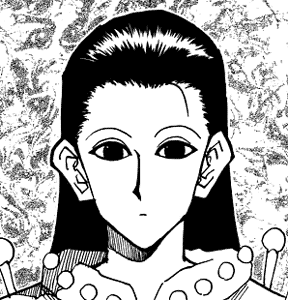
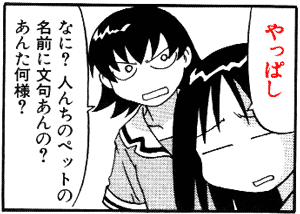


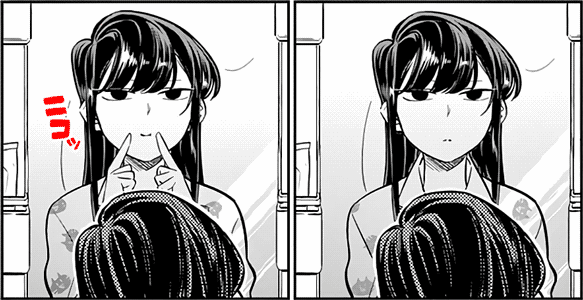
No comments: